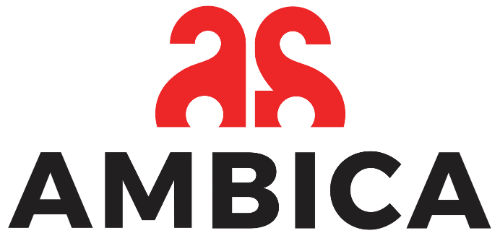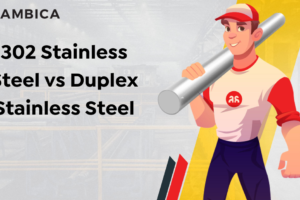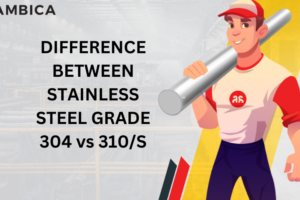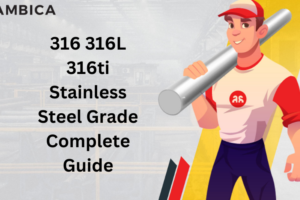Ferritic Stainless Steels are magnetic in nature and have BCC (body centred cubic ) lattice structure. They have high chromium (10.5-27 % by wt.) and low carbon (0.03-0.12 % by wt.) content along with small quantities of elements such as manganese, molybdenum,  niobium and titanium with little or no nickel. They possess good ductility, resistance to corrosion and are more economical than austenitic and duplex grades. Ferritic Stainless Steel are mainly used in making automotive parts, industrial machinery and kitchen wares as they readily undergo cold working and deep drawing operations.
niobium and titanium with little or no nickel. They possess good ductility, resistance to corrosion and are more economical than austenitic and duplex grades. Ferritic Stainless Steel are mainly used in making automotive parts, industrial machinery and kitchen wares as they readily undergo cold working and deep drawing operations.
Ferritic Stainless Steel are mainly classified into five groups namely:
Group 1 (Type 409/410L)
Group 2 (Type 430)
Group 3 (Type 430Ti, 439 and 441)
Group 4 (Type 434, 436, 444)
Group 5 (Type 446, 445, 447)
Group 1 (Type 409/410L)
Grade 409 is favourable in moist conditions and is less prone to corrosive cracking. Primarily it was used in exhaust systems of automobiles but now it is being used in exhaust tubing and catalytic convertors casings. On the other hand, grade 410 is used in making outer bodies of buses, containers and LCD monitor frames, etc.
Group 2 (Type 430)
Grade 430 is more resistant to corrosive attacks by organic, nitric and sulphuric acids as it has a high chromium content. The major areas of its application is in the manufacturing of interior walls of washing machines, kitchen sinks, cooking utensils and indoor panels etc.
Group 3 (Type 430 Ti, 439 and 441)
They have greater weld ability in comparison to all other grades of ferritic
stainless steel. However, sometimes they get prone to sensitization in the WAZ (weld affected zone). Nowadays, they are being as a substitute for austenitic grade 304 in the manufacturing of exhaust manifold systems, interior walls/ sheets of various stainless steel’s appliances.
Group 4 (Type 434, 436 and 444)
These grades are extremely useful in acute cryogenic conditions because of higher molybdenum content present in them. Due to this hot working property, they are used in solar water heaters, hot water tanks and microwave oven elements. They have high PREN (pitting resistance equivalent number) value equal to that of grade 316 enabling it to withstand more corrosive outdoor conditions.
Group 5 (Type 445,446 and 447)
They are scale proof and are deployed in offshore conditions where moisture content in the air is quite high. It is hard to believe that Grade 447 has corrosive resistance equivalent to that of Titanium metal just because of higher molybdenum metal present in it.
The ferritic stainless steels in all, are more prone to IGC than austenitic steels but this can be minimized by adding stablizing alloys like Ti or Nb in small amounts. Moreover quenching and tempering heat treatment process further strengthens their corrosion resistance nature. Grain embrittlement often occurs in ferritic steels in the working temperature range of 400-500º C, this phenomenon can be avoided by annealing and cooling them above 500º C.
Finally after having an outlook on the classification of ferritic stainless steel, we can deduce the fact that they are quite special, distinct and explicit many remarkable properties which had become their identity now.
About Us
Ambica Steels Limited is one of the leading stainless steel long products manufacturers from India. We have over 5 decades of experience is stainless steel manufacturing. Our product range of duplex stainless steel covers the following grades-
For any further information on any of the Stainless steel grades, feel free to get in touch with us at info@ambicasteels.com or https://ambicasteels.com/contact-us/
Author Bio

Eresh Sharma
The author is a Sales Engineer with Ambica Steels Limited. In his free time, he likes to write blogs and articles on Materials Science and Engineering, Technology, Steel Industries, Lifestyle and much more.





